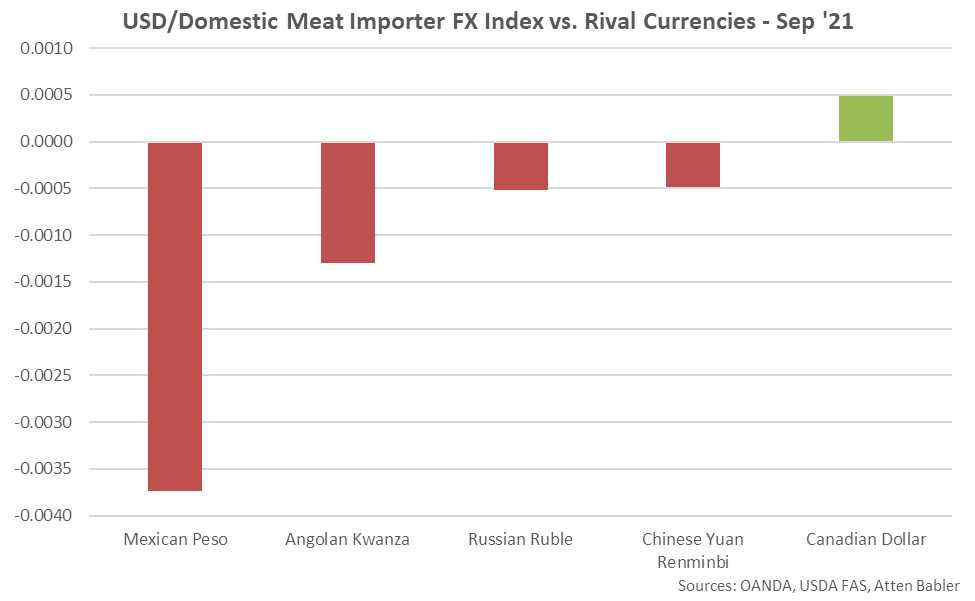Atten Babler Meat FX Indices – Oct ’21
The Atten Babler Commodities Meat Foreign Exchange (FX) Indices weakened throughout Sep ’21. The USD/Meat Exporter FX Index, USD/Meat Importer FX Index and USD/Domestic Meat Importer FX Index all declined slightly throughout the month.
Global Meat Net Trade:
Major net meat exporters are led by the U.S., followed by Brazil, the EU-28, India, Canada and Australia (represented in green in the chart below). Major net meat importers are led by Japan, followed by Russia, Mexico, the U.S., China, the EU-28, Hong Kong and Saudi Arabia (represented in red in the chart below).
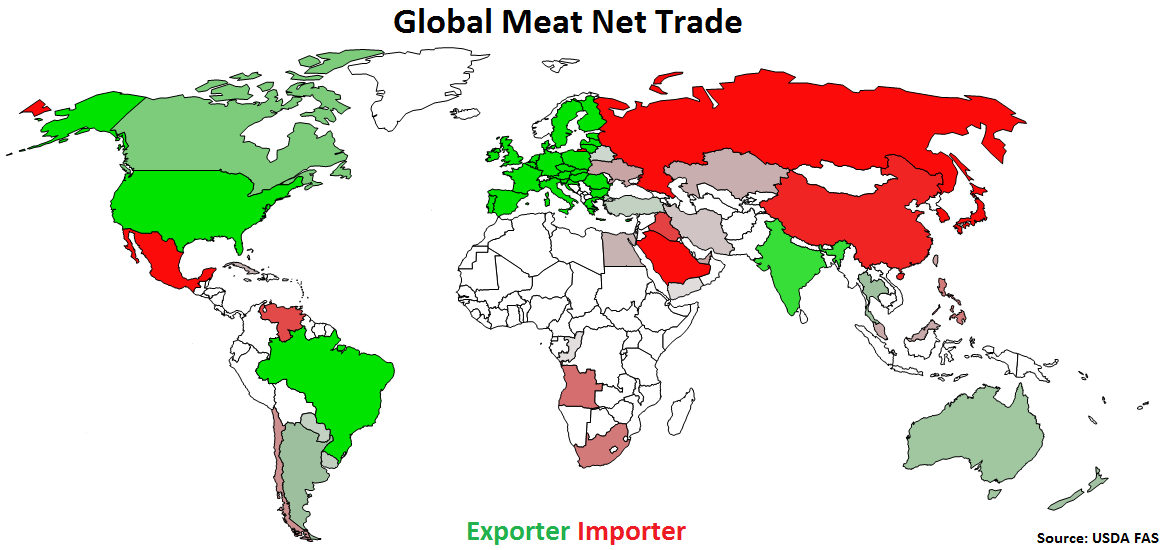
The United States accounts for over a quarter of the USD/Meat Exporter FX Index, followed by Brazil at 22% and the EU-28 at 14%. India, Canada and Australia each account for between 5-10% of the index.
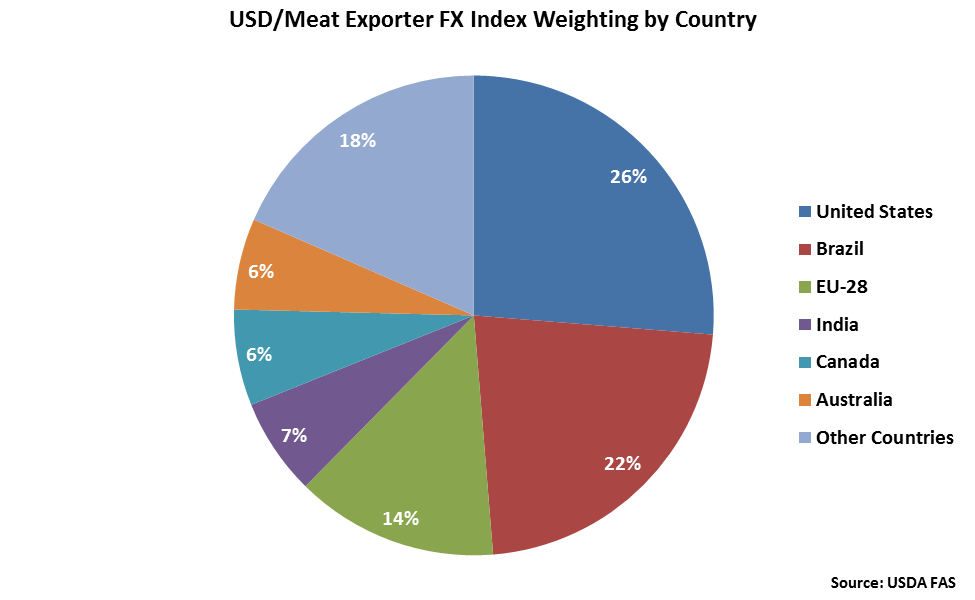
Japan accounts for 14% of the USD/Meat Importer FX Index, followed by Russia at 12%. Mexico, the United States, China, the EU-28, Hong Kong and Saudi Arabia each account for between 5-10% of the index.
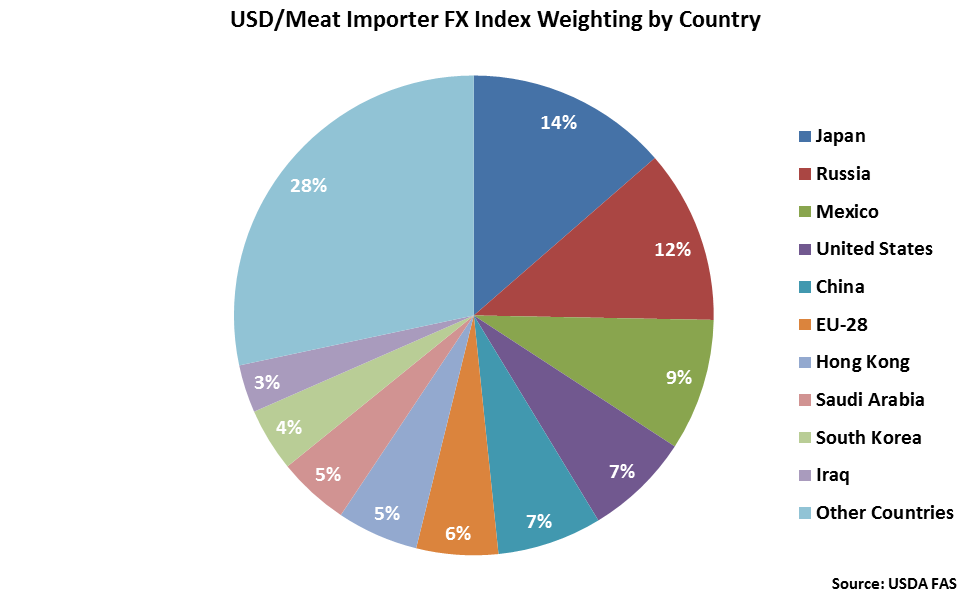
USD/Meat Exporter FX Index:
The USD/Meat Exporter FX Index declined 0.1 point throughout Sep ’21, finishing at a value of 155.5. The USD/Meat Exporter FX Index has declined 1.1 points throughout the past six months but has remained up 46.7 points since the beginning of 2014. A strong USD/Meat Exporter FX Index reduces the competitiveness of U.S. meat relative to other exporting regions (represented in green in the Global Meat Net Trade chart), ultimately resulting in less foreign demand, all other factors being equal. USD appreciation against the Brazilian real has accounted for the majority of the gains since the beginning of 2014.
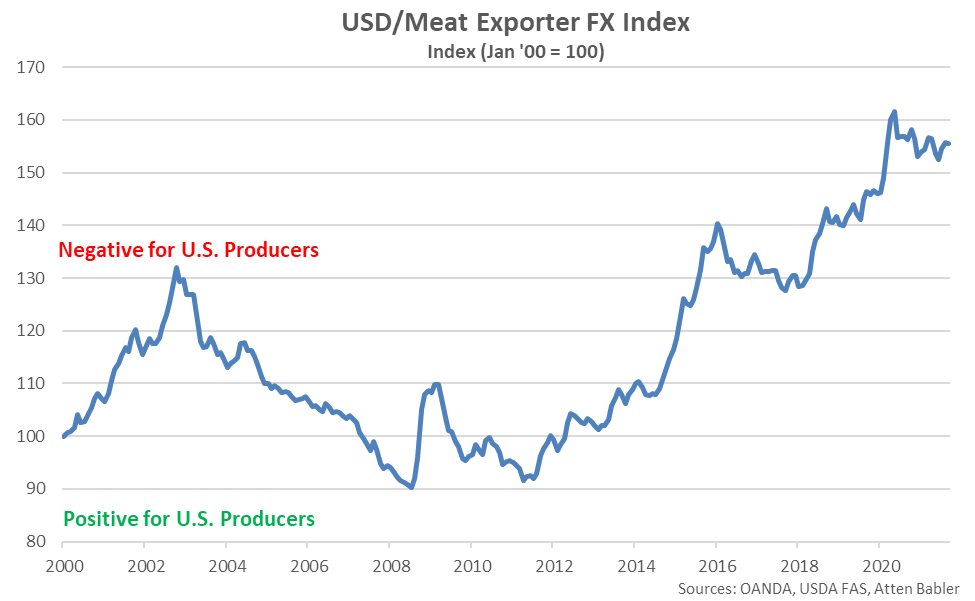
Appreciation against the USD within the USD/Meat Exporter FX Index during Sep ’21 was led by gains by the Indian rupee, followed by gains by the New Zealand dollar and Australian dollar. USD gains were exhibited against the Brazilian real and Canadian dollar.
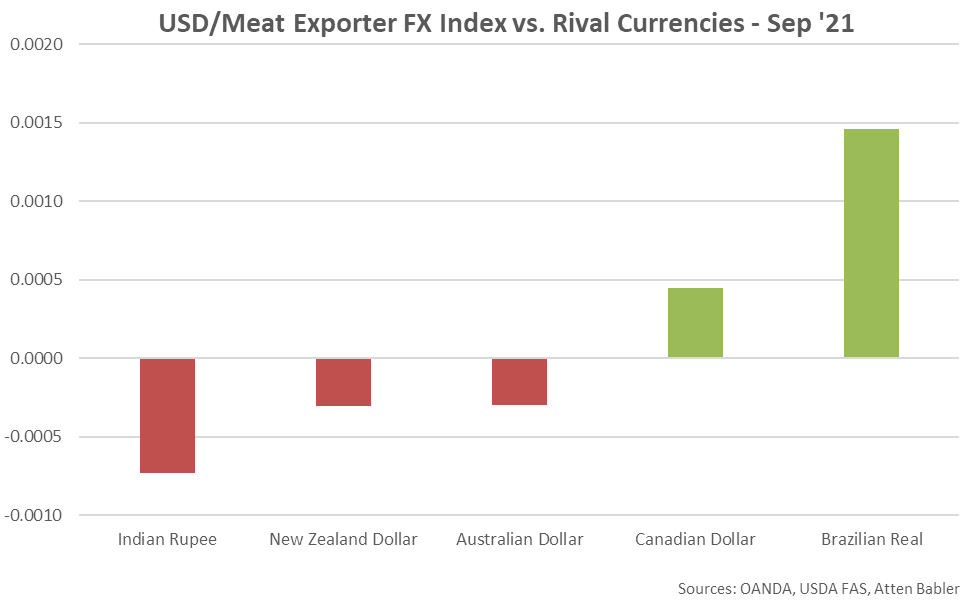
USD/Meat Importer FX Index:
The USD/Meat Importer FX Index declined 0.3 points throughout Sep ’21, finishing at a value of 155.3. The USD/Meat Importer FX Index has declined 0.2 points throughout the past six months but has remained up 39.4 points since the beginning of 2014. A strong USD/Meat Importer FX Index results in less purchasing power for major meat importing countries (represented in red in the Global Meat Net Trade chart), making U.S. meat more expensive to import. USD appreciation against the Russian ruble and Mexican peso has accounted for the majority of the gains since the beginning of 2014.
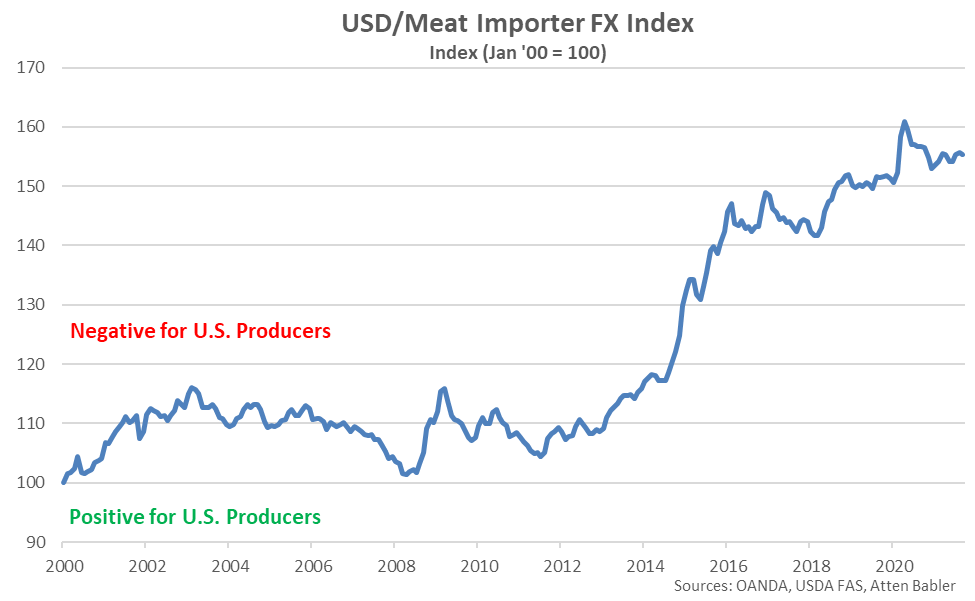
Appreciation against the USD within the USD/Meat Importer FX Index during Sep ’21 was led by gains by the Russian ruble, followed by gains by the Angolan kwanza and Mexican peso. USD gains were exhibited against the Japanese yen and South Korean won.
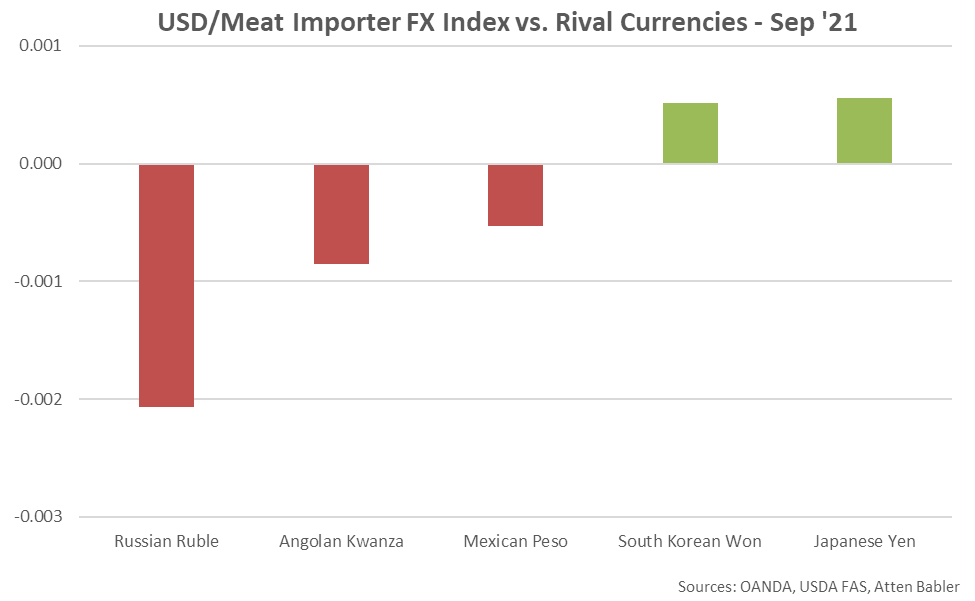
U.S. Meat Export Destinations:
Major destinations for U.S. meat exports are led by Mexico, followed by Japan, China, Canada, and Hong Kong.
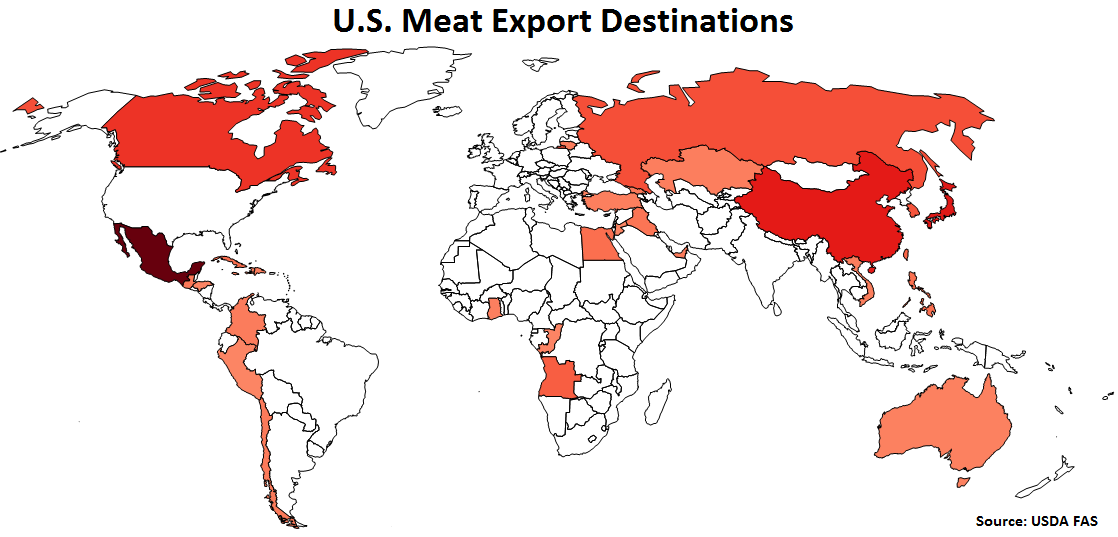
Mexico accounts for over a quarter of the USD/Domestic Meat Importer FX Index, followed by Japan at 11%. China, Canada and Hong Kong each account for between 5-10% of the index.
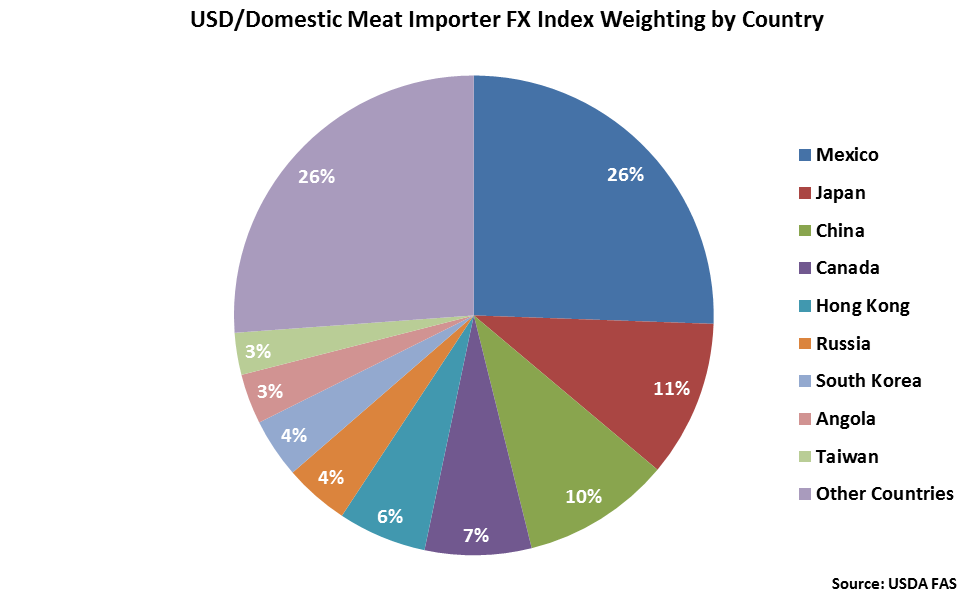
USD/Domestic Meat Importer FX Index:
The USD/Domestic Meat Importer FX Index declined 0.3 points throughout Sep ’21, finishing at a value of 164.0. The USD/Domestic Meat Importer FX Index has declined 0.4 points throughout the past six months but has remained up 46.6 points since the beginning of 2014. A strong USD/Domestic Meat Importer FX Index results in less purchasing power for the traditional buyers of U.S. meat (represented in red in the U.S. Meat Export Destinations chart), ultimately resulting in less foreign demand, all other factors being equal. USD appreciation against the Mexican peso has accounted for the majority of the gains since the beginning of 2014.
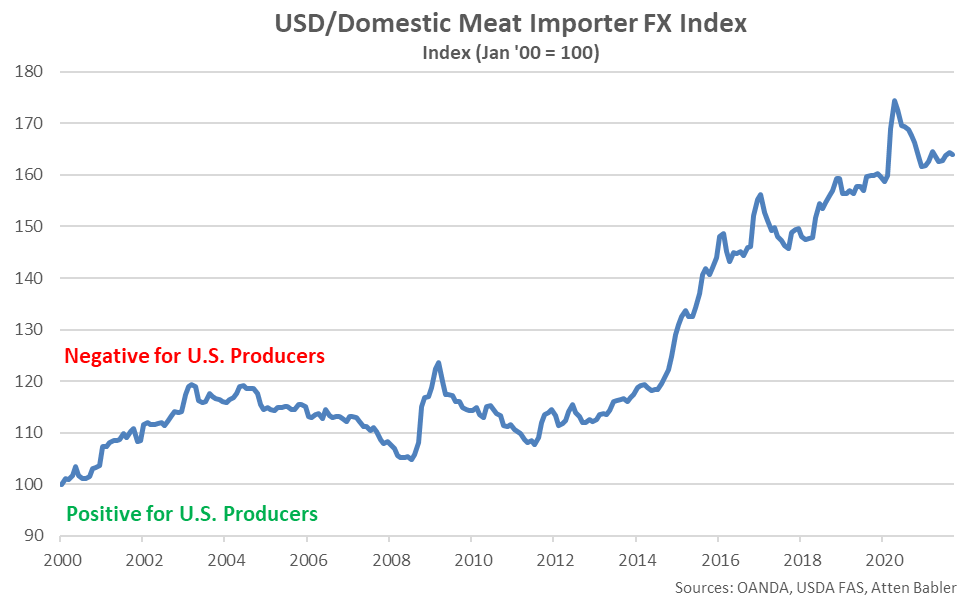
Appreciation against the USD within the USD/Domestic Meat Importer FX Index during Sep ’21 was led by gains by the Mexican peso, followed by gains by the Angolan kwanza, Russian ruble and Chinese yuan renminbi. USD gains were exhibited against the Canadian dollar.
